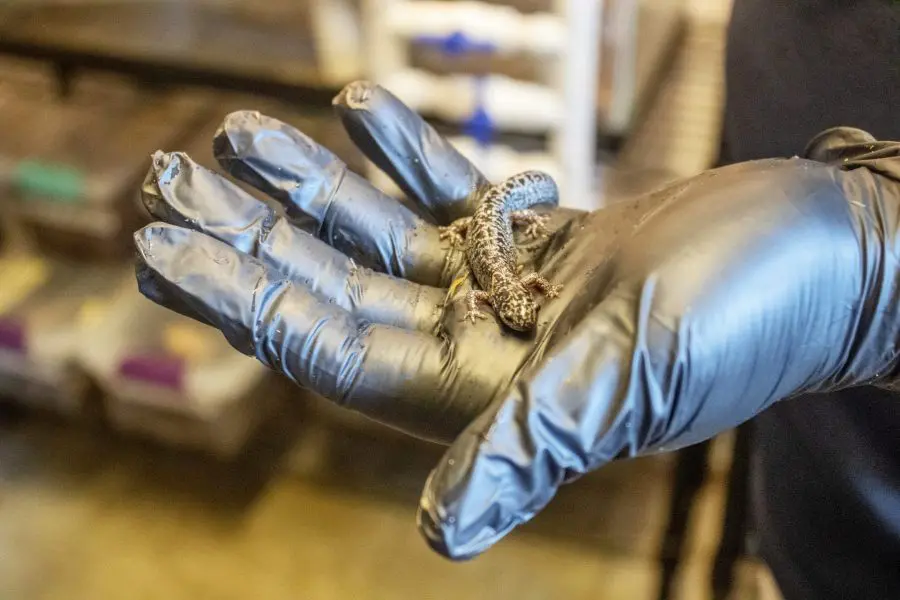

For nearly 2 years now, our group of Frosted Flatwoods Salamanders has been growing from juveniles to adults in a behind-the-scenes area. Now, we’ve moved to the next stage of trying to secure a future for this critically endangered species: Giving our salamander residents the resources necessary to reproduce.
This species has had a 90% population decline since 2000, placing them at imminent risk of extinction in the next 5-10 years. This decline is due mainly to the loss of their habitat, the longleaf pine ecosystem, which has been reduced to 3% of its original range. This species has habitats east of the Apalachicola River in Franklin, Wakulla, Liberty, Jefferson and Baker counties, according to the Florida Fish and Wildlife Conservation Commission.
Frosted flatwoods salamanders have reproduced just once in human care at our partner facility, the Amphibian Foundation in Atlanta, Georgia. In recent years, the Frosted Flatwoods Salamander Conservation Breeding Working Group was created as a partnership of agencies and organizations to help this species through conservation breeding and experimental release.
Frosted flatwoods salamanders lay their eggs on the edge of temporarily dry pools of water. Rain leads the water to rise, and larvae hatch when the water reaches them. If this doesn’t happen, the year’s offspring are lost.

This is the breeding habitat for our frosted flatwood salamanders.
Our Conservation team has recreated this unique breeding habitat by giving our adult salamanders a dual environment with dry and wet areas to mimic these temporary ponds. Water levels will be controlled with a drainage valve on the bottom of the habitat, and a sprinkler at the top of this habitat will recreate the “rain” effect.
Our female salamander named Violet has been identified as being gravid, or carrying eggs. She and one of our male salamanders, Chico, have been moved to this habitat. Our Conservation team will monitor them and the space for potential eggs. Violet could lay up to 35 eggs – or she could reabsorb them if the conditions aren’t to her liking.
Any offspring that may come from these salamanders may be released in their natural range either in Florida or Georgia. The U.S. Fish and Wildlife Service will decide on this.
With an ever-dwindling population in their natural range, the efforts of this Captive Breeding Group are critical to saving this unique species at imminent risk of extinction.
Brevard Zoo is an independent, not-for-profit organization that receives no recurring government funding for our operating costs. Your generous support enables us to continue to serve our community and continue our vital animal wellness, education and conservation programs.
